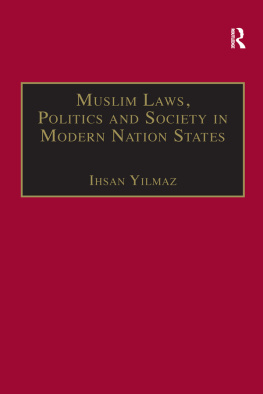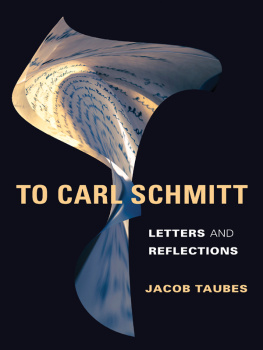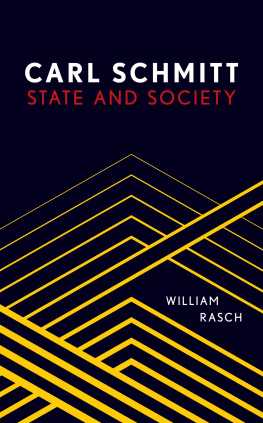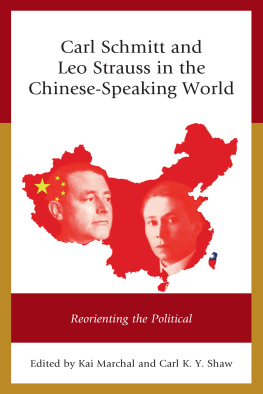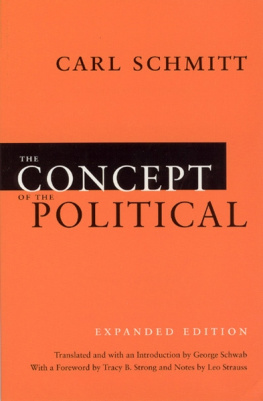JURISTS: PROFILES IN LEGAL THEORY
WILLIAM TWINING, GENERAL EDITOR
THE LEGACY OF PLURALISM
The Continental Jurisprudence of Santi Romano, Carl Schmitt, and Costantino Mortati
MARIANO CROCE and MARCO GOLDONI
STANFORD UNIVERSITY PRESS
Stanford, California
STANFORD UNIVERSITY PRESS
Stanford, California
2020 by the Board of Trustees of the Leland Stanford Junior University. All rights reserved.
No part of this book may be reproduced or transmitted in any form or by any means, electronic or mechanical, including photocopying and recording, or in any information storage or retrieval system without the prior written permission of Stanford University Press.
Printed in the United States of America on acid-free, archival-quality paper.
Cataloging in Publication Data is available on request.
Library of Congress Control Number: 2020937858
Cover design: Rob Ehle
Typeset by Newgen in Galliard Pro 10/15
Contents
Introduction
ALL DISCIPLINES ARE REPLETE with opposing intellectual forces voicing the richness of the human reflective attitude to who we are and how we organize our coexistence. All geohistorical contexts are traversed by more or less irreconcilable accounts of what their present is and what its characterizing traits are. The conceptual history we set out to explore is particularly remarkable for these oppositions and contradictions. Most of the plot of this book unfolds between the rise of late nineteenth-century radical pluralism and the postWorld War I establishment of totalitarian regimesa complex sociopolitical scenario in which national states were facing a lethal threat. Antiparliamentary, socialist, and Marxist movements; insurrectionary anarchism; irredentism; revolutionary syndicalism; and other antisystemic turbulences were challenging the authority of the state and the preeminence of state law over alternative forms of governing and, more profoundly, structuring the social world.
As early as 1909, leading Italian jurist Santi Romanoone of the three protagonists of this bookidentified the pluralist state as the political form that would succeed to the (seemingly) more cohesive national state. In an essay called Lo Stato moderno e la sua crisi (The Modern State and Its Crisis) he maintained that such a political turmoil would change once and for all the shape of the state as a supreme authority endowed with exclusive legislative powers and the monopoly of coercion. The alleged unity of the statewhich Romano regarded as a fictitious production of state public Romano believed this process would be conducive to the gradual decline of the legislative state that emerged out of the French Revolution and to the complete reorganization of its apparatus as a much looser complex of semiautonomous substate bodies.
However realistic Romanos portrait may have seemed in the first decade of the twentieth century, it would soon be supplanted by the rise of totalitarian regimes intended to overcome the problem of pluralism with a drastic, brutal, and eventually disastrous solution. Despite this, the main claim we will make in the following chapters is that Romano, along with German jurist Carl Schmitt and Italian jurist Costantino Mortati, deployed accounts of the interplay between pluralism and the state that offered intriguing alternative solutions to the one which many Western states would soon adopt. A related claim is that these accounts were not only able to favor an alternative juridico-political scenario at the timetheir considerations on how the state should cope with radical pluralism are particularly relevant to present-day politics as well.
Romano, Schmitt, and Mortati are leading figures of classic legal institutionalism, one of the most influential schools of thought in Western legal theory. It is between the end of the nineteenth century and the first half of the twentieth century that classic legal institutionalism developed as a counterhistory of law. It is describable as a counterhistory because most of its representatives never yielded to the common view that the law and the state coincide, and a fortiori the history of law and the history of the state. Nor did they accept that the destiny of law is formal constitutions. While some institutional theories were certainly more apt to shore up state-based political arrangements, most of them, even state-centered ones, made the case that law is a broader phenomenon than the political structures that give legal orders a context-specific shape. Not only was such a theoretical feat scarcely facetiousat the time it also sounded as somewhat sacrilegious. In effect, the nineteenth century had witnessed the rise and consolidation of powerful and cohesive states (including states that had lagged behind in terms of territorial unification, such as Germany and Italy), so much so that in the legal field debates mainly revolved around the foundational character of the sovereign will of the state, its legal personality, and the states being the ethical shell of the national community.
Legal institutionalists took very seriously the series of unexpected fissures and breakpoints that at the end of the nineteenth century was threatening the state as the political form par excellence. In effect, a great many civil society associations, political organizations, and antisystemic movements were posing a lethal threat to the very idea of the state as the destiny of politics. These emerging social actors begun to depict the state as a corrupted and hegemonic construct that the dominant elites nurtured to sway civil society and the myriads of spontaneous, self-organizing forces at play within them. Within the polyvocal scene of European legal theorizing, legal institutionalists tried to decipher and handle the crisis to comeone that pitted the several claims to political autonomy and legal independence against the increasingly despotic power of the executive. For sure, other key legal and political paradigms, such as Otto von Gierkes law of associations, G. D. H. Coles guild socialism, Harold Laskis political pluralism, Max Webers sociological conception of law, Lon Duguits sociolegal functionalism, Eugen Ehrlichs and Hermann Kantorowiczs Free Law Movement, were trying to pinpoint the difficult relationship between the centripetal attraction of a supreme political entity (the state) and the centrifugal plurality of social life (substate and suprastate movements, associations, and organizations). However, legal institutionalists, and especially Romano, Schmitt, and Mortati, deployed a strikingly rich conceptual tapestry to explain why and how late nineteenth-century administrative state was ceasing to be the secure anchor for, and the linchpin of, speculation about the nature of law.
THE LEITMOTIV OF THIS BOOK
The recognized initiator of classic legal institutionalismpointless to summarize these solutions and how these three scholars made their way to them. Accordingly, the aim of this Introduction is to illustrate how we plan to account for all this.
The leitmotiv of our exploration will be the double relation of juristic versus political conceptions of law and the interplay between matter and nomic force. Though these notions will become clearer as we go along, a few preliminary considerations will be of help. The opposition of juristic and political understandings is somehow inscribed in the history of Western law. Despite all attempts at singling out distinctive traits, from the Roman ius civile to medieval glossators and postglossators law through to modern state-based law, the legal phenomenon has taken many a shape depending on the sociopolitical arrangement. Doubtless, an important characteristic differentiating the various conformations of law is the relation between the legal and the political realms and thus the laws degree of autonomy or independence from politics.





